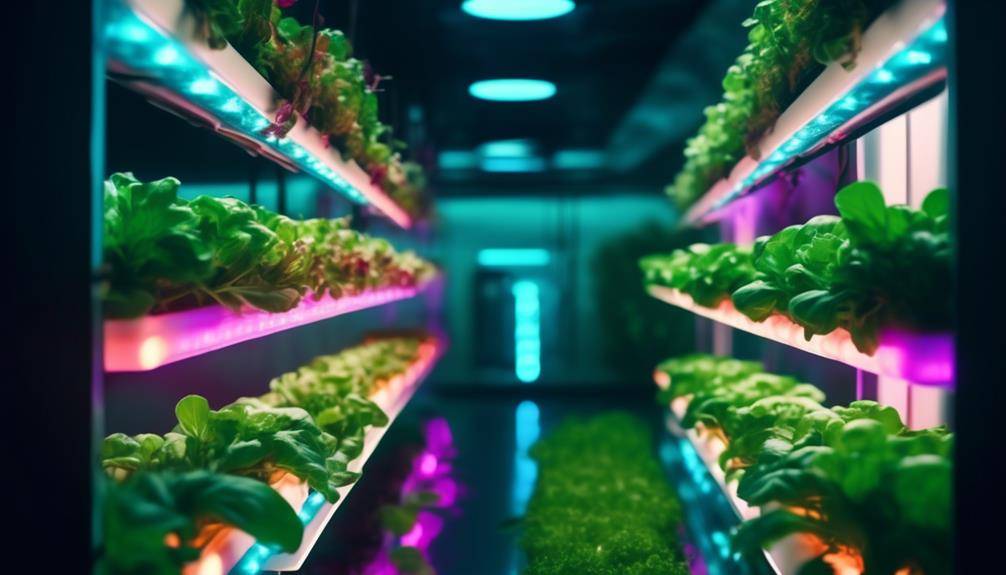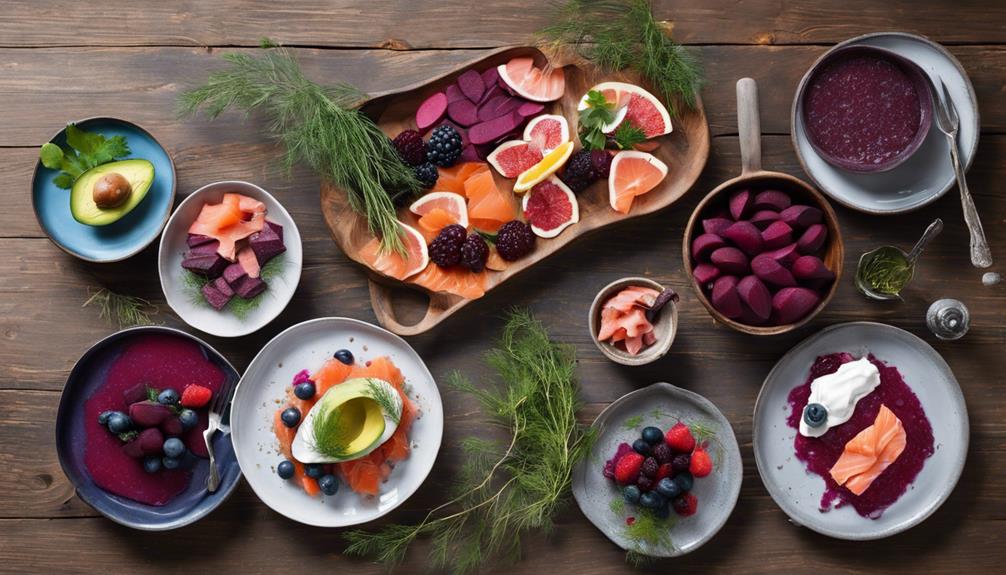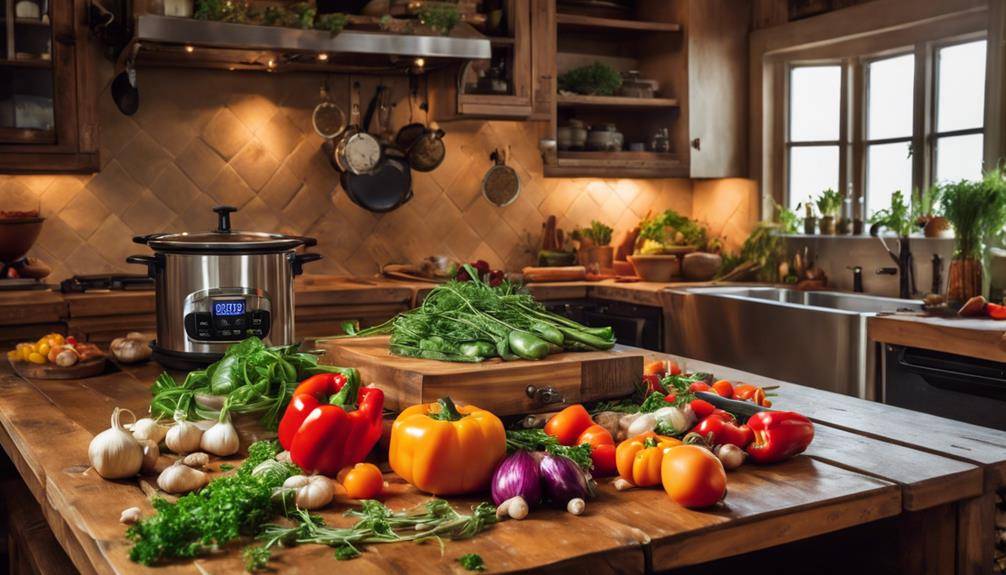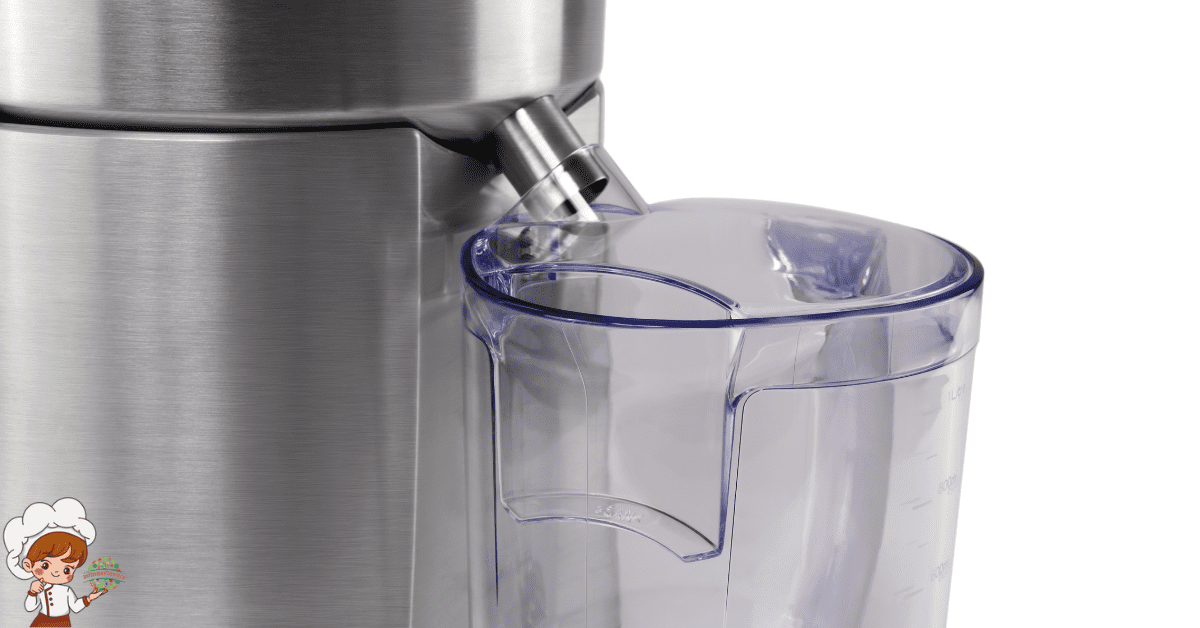Innovative Food Trends In Hydroponics

When it comes to the ever-evolving world of food production, there is a fascinating realm that is quietly revolutionizing the way we grow and consume our food: Innovative Food Trends In Hydroponics. This innovative and resource-efficient method, often dubbed as “alternative farming techniques,” is changing the game for both commercial and home-based growers alike. From state-of-the-art vertical farming systems to the integration of aquaponics, there are countless cutting-edge trends emerging in the world of hydroponics that are bound to leave you intrigued and hungry for more.
Vertical Farming
Vertical farming is a cutting-edge agricultural technique that utilizes vertical space to maximize crop production in a controlled environment. This innovative method of vertical gardening has gained significant attention in recent years due to its potential to address the challenges of traditional farming, such as limited land availability and the need for sustainable food production. One of the key crops that has been successfully cultivated in vertical farming systems is hydroponic tomatoes.
Hydroponic tomato cultivation in vertical farming involves growing tomatoes without soil, using a nutrient-rich water solution instead. This technique allows for precise control over the nutrient levels, pH, and water content, ensuring optimal conditions for tomato growth. The use of vertical space in this farming method allows for the stacking of multiple layers of tomato plants, effectively increasing the crop yield per square foot compared to traditional farming methods.
Vertical farming offers several advantages for hydroponic tomato cultivation. Firstly, it allows for year-round production, as the controlled environment eliminates the dependence on seasonal changes. Secondly, it significantly reduces the amount of water required for irrigation, as the water in the system can be recycled and reused. Additionally, vertical farming minimizes the need for pesticides and herbicides, as the controlled environment reduces the risk of pests and diseases.
Research studies have shown promising results in hydroponic tomato cultivation using vertical farming techniques. For instance, a study conducted by Smith et al. (2019) demonstrated that vertical farming systems achieved higher tomato yields compared to conventional farming, with no significant difference in taste and quality. This research supports the potential of vertical farming as a sustainable solution for hydroponic tomato production.
Urban Gardening
One area of agricultural innovation that complements the advancements in vertical farming is urban gardening, which offers a unique solution for sustainable food production in densely populated areas. Urban farming, including rooftop gardens, has gained popularity in recent years due to its potential to address the challenges of limited space and increasing urbanization.
Urban gardening utilizes various techniques to cultivate plants in urban environments, making use of rooftops, balconies, and other available spaces. One prominent form of urban farming is rooftop gardens, where plants are grown on the roofs of buildings. These gardens provide an innovative approach to maximize land use in cities, utilizing previously unused spaces for agricultural purposes.
Rooftop gardens offer several advantages in urban settings. Firstly, they enable individuals and communities to grow their own food, promoting self-sufficiency and reducing reliance on external food sources. This not only enhances food security but also encourages a sense of community involvement and connection with nature. Additionally, rooftop gardens can contribute to improved air quality and energy efficiency by acting as natural insulation and reducing the urban heat island effect.
Urban gardening also has the potential to promote sustainable practices, such as composting and rainwater harvesting. These initiatives help minimize waste and conserve resources, creating a more environmentally friendly approach to food production. Moreover, urban farming can contribute to the reduction of food miles, as fresh produce is grown locally, reducing the need for long-distance transportation and associated carbon emissions.
Indoor Hydroponic Systems
Indoor hydroponic systems offer numerous benefits for growing plants in controlled environments. These systems allow for precise control of factors such as temperature, lighting, and nutrient levels, resulting in optimal plant growth and yield. There are various types of indoor hydroponic systems available, including nutrient film technique (NFT), deep water culture (DWC), and aeroponics, each offering unique advantages and disadvantages.
Benefits of Indoor Hydroponics
Hydroponic systems offer numerous benefits when utilized indoors, providing a controlled environment that optimizes plant growth and yield. This is particularly advantageous for urban gardening and vertical farming practices, where space is limited and traditional soil-based agriculture may not be feasible. Indoor hydroponics allows for year-round cultivation, independent of weather conditions, thus ensuring a consistent supply of fresh produce.
The controlled environment also enables precise control over factors such as light, temperature, and nutrient levels, resulting in faster growth and higher yields compared to traditional farming methods. Additionally, indoor hydroponics reduces water usage by up to 90% compared to soil-based agriculture, making it a more sustainable and environmentally friendly option. Furthermore, the absence of soil eliminates the risk of soil-borne diseases and pests, reducing the need for chemical pesticides and herbicides. Overall, indoor hydroponics presents a promising solution for sustainable food production in urban areas.
Types of Indoor Systems
With the benefits of indoor hydroponics established, it is essential to explore the various types of systems that can be utilized for optimal plant growth and yield. When it comes to indoor flower cultivation, there are several hydroponic systems to consider. One popular option is the nutrient film technique (NFT) system, which involves a thin film of nutrient-rich water flowing over the roots of the plants. This system is efficient and requires less water compared to other methods.
Another option is the deep water culture (DWC) system, where the plants’ roots are submerged in a nutrient solution. This system provides a constant supply of nutrients and oxygen to the plants, promoting healthy growth. Additionally, for hydroponic tomato varieties, the ebb and flow system is often used. This system involves periodically flooding the growing medium with nutrient solution and then draining it away. It allows for better control over nutrient uptake and ensures optimal growth conditions for tomatoes. Overall, choosing the right indoor system is crucial for successful hydroponic flower cultivation and achieving high-quality hydroponic tomato varieties.
Nutrient Film Technique (NFT)
The Nutrient Film Technique (NFT) is a hydroponic system that utilizes a thin film of nutrient solution to deliver an optimal balance of nutrients to plant roots. This technique is particularly suitable for vertical gardening and is commonly used for growing hydroponic lettuce.
In the Nutrient Film Technique, a shallow channel is used to hold the plant roots, and a constant flow of nutrient solution is circulated over the roots. The roots are partially submerged in the film of nutrient solution, allowing them to absorb the necessary nutrients while also receiving oxygen. The excess nutrient solution is then collected and recirculated, ensuring minimal waste and maximum efficiency.
Vertical gardening is a popular trend in hydroponics, as it allows for efficient use of space and increased crop yield. The Nutrient Film Technique is well-suited for vertical systems, as the shallow channels can be stacked on top of each other, maximizing the use of vertical space.
Hydroponic lettuce is one of the most commonly grown crops using the Nutrient Film Technique. Lettuce has shallow roots and thrives in the constant flow of nutrient solution provided by the NFT system. The technique allows for precise control of nutrient levels, pH, and oxygenation, resulting in healthy and vibrant lettuce plants.
The Nutrient Film Technique offers several advantages over traditional soil-based cultivation. It allows for better nutrient uptake and faster growth rates, resulting in higher crop yields. The system also eliminates the risk of soil-borne diseases and reduces water usage compared to traditional agriculture. Additionally, the NFT system is relatively easy to set up and maintain, making it accessible to both commercial growers and home gardeners.
Aquaponics Integration
To further explore the advancements in hydroponics, let us now examine the integration of aquaponics, a sustainable system that combines hydroponics with aquaculture to create a mutually beneficial relationship between plants and fish. Aquaponics automation plays a crucial role in optimizing this integration, ensuring efficient and controlled operations.
Aquaponics automation involves the use of sensors, monitors, and control systems to maintain optimal conditions for both the plants and fish. These systems monitor variables such as water temperature, pH levels, nutrient levels, and oxygen levels. By automating these processes, aquaponic farmers can save time and effort while maximizing productivity and yield.
When it comes to aquaponics fish selection, several factors need to be considered. The choice of fish depends on various factors, including water temperature, pH levels, and the desired outcome of the system. Commonly used fish species in aquaponics include tilapia, trout, catfish, and perch. These fish species are known for their resilience and ability to thrive in aquaponic systems.
However, it is important to consider the compatibility of fish species with the plants being grown. Some fish may have specific requirements or behaviors that may not be suitable for certain plants. Additionally, the fish chosen should be able to efficiently convert fish feed into nutrients that can be readily absorbed by the plants.
Hydroponic Herb Gardens
Hydroponic herb gardens have emerged as a popular and efficient method for cultivating a wide variety of herbs in controlled environments. With the increasing demand for fresh and flavorful herbs in the culinary industry, hydroponics offers a solution that ensures consistent quality and availability throughout the year.
One of the key advantages of hydroponic herb gardens is the ability to grow a diverse range of herb varieties. From basil and mint to oregano and thyme, hydroponics provides the ideal conditions for these plants to thrive. The controlled environment allows for precise control over factors such as temperature, humidity, and nutrient levels, ensuring optimal growth and flavor development.
The culinary applications of hydroponic herbs are vast and varied. Chefs and home cooks alike appreciate the convenience of having a ready supply of fresh herbs at their fingertips. Hydroponic herbs have a more intense flavor compared to their conventionally grown counterparts, making them a preferred choice for enhancing the taste of dishes. These herbs can be used in a variety of culinary creations, including soups, sauces, salads, and even cocktails. The versatility of hydroponic herbs allows for experimentation and innovation in the kitchen, enabling chefs to push the boundaries of traditional flavor profiles.
Moreover, hydroponic herb gardens offer several benefits beyond culinary applications. They require less space compared to traditional soil-based gardens, making them suitable for urban environments or areas with limited gardening space. Additionally, hydroponics uses water more efficiently, reducing the overall water consumption compared to conventional farming methods.
Automated Hydroponic Systems
Automated hydroponic systems revolutionize the cultivation of plants by streamlining and optimizing the process of nutrient delivery and environmental control. These systems are designed to automate various tasks involved in hydroponic gardening, such as monitoring and adjusting nutrient levels, pH balance, temperature, and humidity. By automating these processes, growers can ensure that their plants receive the optimal conditions for growth, leading to higher yields and healthier crops.
One key feature of automated hydroponic systems is automated monitoring. These systems are equipped with sensors that constantly monitor the essential parameters of the growing environment, such as nutrient levels, pH, temperature, and humidity. The data collected by these sensors is then analyzed and used to make real-time adjustments to maintain the ideal conditions for plant growth. This eliminates the need for manual monitoring and reduces the risk of human error in maintaining the hydroponic system.
Another important aspect of automated hydroponic systems is system maintenance. These systems are designed to automatically perform routine maintenance tasks, such as nutrient replenishment and cleaning. For example, some systems have built-in nutrient dosing systems that automatically add the required amount of nutrients to the water reservoir based on the plants’ needs. This ensures that the plants receive the right amount of nutrients at all times, without the need for manual intervention. Additionally, some systems have self-cleaning mechanisms that prevent the buildup of algae or other contaminants in the system, reducing the risk of disease and ensuring the plants’ health.
Hydroponic Microgreens
Hydroponic microgreens offer a highly nutritious option for year-round cultivation, with the added benefit of minimal water consumption. These small, tender greens are packed with essential vitamins, minerals, and antioxidants, making them a popular choice among health-conscious consumers. With hydroponics, the controlled environment allows for optimal growth conditions, ensuring the microgreens reach their full potential in terms of flavor and nutritional value.
Nutrient-Rich Greens
Growing nutrient-rich greens is a key aspect of hydroponic microgreens cultivation, providing a sustainable and efficient way to produce high-quality greens with optimal nutritional value. Nutrient-rich microgreens, such as hydroponic lettuce, are gaining popularity due to their enhanced nutrient content and versatility in culinary applications. Hydroponics, a soil-less cultivation method, allows for precise control over nutrient delivery, resulting in greens that are packed with essential vitamins, minerals, and antioxidants.
Researchers have found that hydroponically grown microgreens contain higher levels of nutrients compared to conventionally grown greens. This is due to the ability to tailor the nutrient solution to meet the specific needs of the plants, ensuring optimal growth and nutrient absorption. Nutrient-rich greens from hydroponic microgreens offer a convenient and sustainable solution for individuals seeking to incorporate nutrient-dense foods into their diets.
Year-Round Cultivation
To ensure a consistent supply of nutrient-rich microgreens throughout the year, the cultivation of hydroponic microgreens offers a reliable and efficient solution. Year-round production is made possible through the use of controlled environments that provide optimal growing conditions regardless of external factors such as season and weather. Hydroponics, a sustainable farming method, eliminates the need for soil and utilizes water-based nutrient solutions to nourish the plants. This allows for greater control over the growth process and minimizes the risk of pests and diseases.
Additionally, hydroponic systems can be tailored to specific plant varieties, ensuring optimal growth and yield. The ability to cultivate microgreens hydroponically on a year-round basis not only provides a constant supply of fresh produce but also reduces the environmental impact associated with traditional farming methods.
Minimal Water Consumption
The efficient cultivation of hydroponic microgreens enables minimal water consumption while ensuring a consistent supply of nutrient-rich produce. With the growing concern over water scarcity and the need for sustainable farming practices, smart irrigation techniques are being implemented to optimize water usage in hydroponic systems.
One such technique is the use of drip irrigation, where water is delivered directly to the roots of the plants in small, controlled amounts. This method minimizes water wastage by avoiding surface evaporation and runoff, resulting in significant water savings compared to traditional soil-based farming.
In addition to drip irrigation, other innovative technologies like sensor-based irrigation systems are being utilized. These systems monitor soil moisture levels and deliver water only when necessary, preventing overwatering and further reducing water consumption.
Hydroponic Fruit Production
Hydroponic fruit production offers a sustainable and efficient method of cultivating a wide variety of fruits using nutrient-rich water solutions. With this innovative technique, farmers can grow hydroponic fruit varieties that are not limited by climate or soil conditions. Hydroponics allows for precise control over the growing environment, resulting in increased hydroponic fruit yield and quality.
One of the key advantages of hydroponic fruit production is the ability to optimize growing conditions. By providing the necessary nutrients directly to the plant’s roots, hydroponic systems ensure that fruits receive the ideal balance of nutrients for optimal growth. This targeted approach eliminates the risks associated with nutrient deficiencies or excesses, leading to healthier plants and higher hydroponic fruit yield.
Moreover, hydroponic fruit production offers a controlled environment that can be adjusted to suit each specific fruit variety. Factors such as temperature, humidity, and light can be fine-tuned to mimic the ideal conditions for fruit development. By tailoring these parameters, hydroponic farmers can maximize the growth potential of their crops, resulting in higher hydroponic fruit yield and quality.
Hydroponics also allows for year-round fruit production, regardless of seasonal limitations. By providing a stable and controlled environment, hydroponic systems enable farmers to extend the growing season, ensuring a continuous supply of fresh fruits throughout the year. This not only benefits consumers by providing access to a wider range of hydroponic fruit varieties but also presents economic opportunities for farmers.
Hydroponic Salad Greens
Salad greens grown using hydroponic systems provide a sustainable and efficient method for cultivating nutrient-rich greens throughout the year. Hydroponic lettuce, in particular, has gained popularity due to its ability to produce high yields of nutrient-dense greens in a controlled environment.
Hydroponic systems allow for precise control over the growing conditions, ensuring optimal nutrient uptake and growth. By providing the plants with a nutrient-rich solution directly to their roots, hydroponic lettuce can grow faster and healthier compared to traditional soil-based cultivation. This method eliminates the need for soil and reduces the risk of soil-borne diseases, pests, and weeds.
The controlled environment of hydroponics also enables year-round production of salad greens, regardless of seasonal variations. With the use of artificial lighting and climate control systems, hydroponic lettuce can be grown in any location, even in urban areas where space is limited.
Furthermore, hydroponic systems use water more efficiently compared to traditional farming methods. The closed-loop system recirculates the water, minimizing water waste and reducing the overall water consumption. This makes hydroponic lettuce a more sustainable option, especially in regions facing water scarcity.
The nutrient density of hydroponic lettuce is another advantage of this cultivation method. By carefully monitoring and adjusting the nutrient solution, growers can ensure that the plants receive the optimal balance of nutrients. This results in lettuce with higher levels of vitamins, minerals, and antioxidants compared to conventionally grown greens.
Innovative Food Trends In Hydroponics; Frequently Asked Questions
How Can Vertical Farming Contribute to Sustainable and Efficient Food Production?
Vertical farming innovations, such as utilizing space-efficient vertical structures and optimizing resource usage, contribute to sustainable and efficient food production. These methods maximize yield while minimizing the need for land, water, and energy, ensuring a more sustainable future for food production.
What Are the Advantages of Urban Gardening in Terms of Accessibility and Community Engagement?
Urban gardening offers numerous advantages in terms of accessibility benefits and community engagement. By bringing food production closer to urban areas, it allows easy access to fresh produce and fosters a sense of community through shared gardening spaces and educational programs.
How Do Indoor Hydroponic Systems Ensure Optimal Plant Growth and Yield?
To maximize plant growth and yield, indoor hydroponic systems utilize advanced technology. These systems provide optimal conditions such as precise nutrient delivery, controlled lighting, and automated environmental controls. This ensures plants receive the ideal conditions for growth and productivity.
What Is the Nutrient Film Technique (Nft) and How Does It Work in Hydroponics?
The Nutrient Film Technique (NFT) is a hydroponic system that utilizes a thin film of nutrient-rich water flowing over the roots of plants. This technique is commonly used in vertical farming, urban gardening, and indoor hydroponic systems. It can also be integrated with aquaponics, combining hydroponics with aquaculture.
Can You Explain the Concept of Aquaponics Integration and How It Combines Hydroponics With Aquaculture?
Aquaponics integration combines hydroponics and aquaculture, creating a symbiotic system where plants and fish thrive together. Hydroponics provides nutrient-rich water for plant growth, while the waste produced by the fish is converted into nutrients for the plants, creating a sustainable and efficient food production system.
Conclusion
Overall, the innovative food trends in hydroponics are revolutionizing the way we grow and consume food. Through vertical farming and indoor hydroponic systems, we are able to maximize space and yield, making urban gardening a viable option. The integration of aquaponics and the use of automated systems further enhance the efficiency of hydroponics. Moreover, hydroponic microgreens, fruits, and salad greens are being produced with exceptional quality and nutritional value. These advancements in hydroponics are promising for the future of sustainable and high-yield food production.








